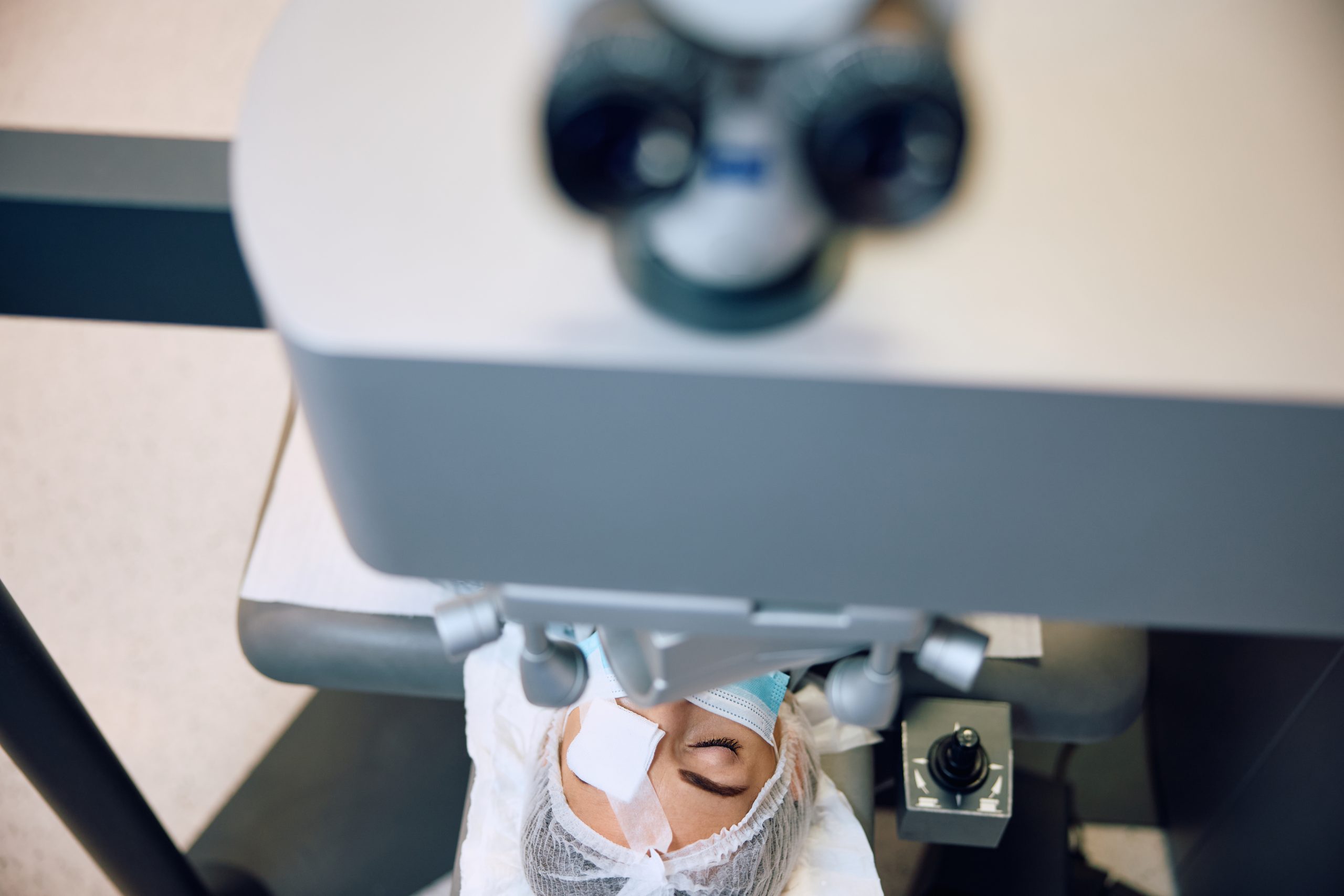Endoscopic Cyclophotocoagulation (ECP): A Comprehensive Review of its Role in Glaucoma Management
Introduction
Endoscopic Cyclophotocoagulation (ECP) has emerged as a promising treatment modality in the management of glaucoma, offering a minimally invasive alternative to traditional surgical interventions. By selectively targeting the ciliary body, ECP aims to reduce intraocular pressure (IOP) and mitigate the progression of glaucomatous optic neuropathy. In this comprehensive review, we explore the principles of ECP, its clinical applications, efficacy, safety profile, patient selection criteria, and emerging trends in its use within the field of glaucoma management.
Understanding Endoscopic Cyclophotocoagulation (ECP)
- Principle: ECP involves the use of an endoscope, which is introduced into the anterior chamber of the eye to visualize and treat the ciliary body. Laser energy, typically in the form of diode laser, is delivered to the ciliary processes, resulting in photocoagulation and reduction of aqueous humor production.
- Mechanism of Action: By selectively ablating a portion of the ciliary body epithelium, ECP decreases the secretion of aqueous humor while preserving the physiological outflow pathways, thus lowering IOP.
Indications and Clinical Applications
- Primary Glaucomas: ECP is indicated for patients with primary open-angle glaucoma (POAG), primary angle-closure glaucoma (PACG), and secondary glaucomas refractory to medical therapy or conventional surgical interventions.
- Combined Procedures: ECP can be performed as a standalone procedure or in conjunction with cataract surgery (phacoemulsification) or other glaucoma surgeries such as trabeculectomy or tube shunt implantation.
Advantages of ECP
- Minimally Invasive: ECP is characterized by its minimally invasive nature, involving a small incision and limited tissue manipulation. This results in reduced post-operative inflammation, faster recovery, and improved patient comfort compared to traditional glaucoma surgeries.
- Targeted Treatment: ECP selectively targets the ciliary body while sparing adjacent ocular structures, minimizing the risk of complications such as hypotony, choroidal effusion, and bleb-related issues.
- Lower Risk of Hypotony: Unlike procedures that involve direct ablation of the trabecular meshwork or creation of filtration blebs, ECP maintains physiological aqueous outflow, reducing the risk of post-operative hypotony.
- Repeatable Procedure: ECP can be repeated or combined with other surgical interventions if necessary, providing flexibility in the management of glaucoma progression or treatment failure.
Clinical Efficacy and Outcomes
- Reduction in Intraocular Pressure: Clinical studies have demonstrated significant reductions in IOP following ECP, with long-term efficacy comparable to traditional glaucoma surgeries.
- Visual Outcomes: ECP is associated with preservation or improvement of visual acuity and visual field parameters, making it an attractive option for patients concerned about visual function.
- Complication Rates: While ECP is generally well-tolerated, potential complications include transient inflammation, transient or persistent IOP elevation, and rare occurrences of cyclitic membrane formation or hyphema.
Patient Selection and Pre-operative Evaluation
- Patient Selection: Ideal candidates for ECP include individuals with uncontrolled glaucoma despite maximal medical therapy, intolerance or non-compliance with medications, or contraindications to conventional glaucoma surgeries.
- Pre-operative Assessment: Preoperative evaluation includes comprehensive ophthalmic examination, gonioscopy, imaging studies (e.g., optic nerve assessment, visual field testing), and assessment of systemic health and surgical risk factors.
Emerging Trends and Future Directions
- Combination Therapies: ECP is increasingly being combined with other minimally invasive glaucoma surgeries (MIGS) to achieve synergistic effects in IOP reduction while minimizing surgical trauma.
- Technological Advancements: Ongoing advancements in endoscopic imaging technology and laser delivery systems may further enhance the safety, precision, and efficacy of ECP procedures.
- Expanded Indications: Future research may explore the utility of ECP in the management of pediatric glaucomas, neovascular glaucoma, and other challenging glaucoma subtypes.
Conclusion
Endoscopic Cyclophotocoagulation (ECP) offers a valuable therapeutic option for patients with glaucoma, providing effective IOP reduction with minimal invasiveness and favorable visual outcomes. As the field of glaucoma management continues to evolve, ECP remains a versatile tool in the armamentarium of ophthalmologists, offering flexibility in treatment approaches and improving the quality of life for individuals with glaucoma. Through ongoing research and technological innovation, ECP holds promise for addressing unmet needs in glaucoma care and advancing the standard of treatment for this sight-threatening condition.
World Eye Care Foundation’s eyecare.live brings you the latest information from various industry sources and experts in eye health and vision care. Please consult with your eye care provider for more general information and specific eye conditions. We do not provide any medical advice, suggestions or recommendations in any health conditions.
Commonly Asked Questions
Recovery time varies, but most patients can resume normal activities within a few days to a week after ECP.
ECP is typically used for open-angle and angle-closure glaucoma, but its suitability depends on various factors determined by your eye doctor.
While ECP is generally safe, potential long-term side effects may include persistent IOP elevation or cataract formation.
It’s possible to undergo ECP on both eyes during the same surgical session, but your ophthalmologist will assess your individual needs and risks.
Coverage varies depending on your insurance plan and the specific indications for ECP. Consult with your insurance provider for details.
The duration of IOP reduction following ECP can vary among individuals, but studies suggest that its effects can be sustained over several years in many cases.
Risks of ECP surgery include temporary or permanent vision changes, infection, inflammation, bleeding, and rare complications such as cyclitic membrane formation.
Yes, ECP can be performed as a standalone procedure or in combination with other glaucoma surgeries, depending on the severity and characteristics of your glaucoma.
Some patients experience a gradual reduction in IOP and improvement in symptoms within weeks to months after ECP, while others may require more time for optimal results.
ECP may be considered for patients with advanced glaucoma or those who have undergone previous eye surgeries, but individual evaluation by an ophthalmologist is necessary to determine suitability and potential risks.
news via inbox
Subscribe here to get latest updates !








